HOW TO SELL ON A SECOND MARKETPLACE? – PART 1
If we go back and research.
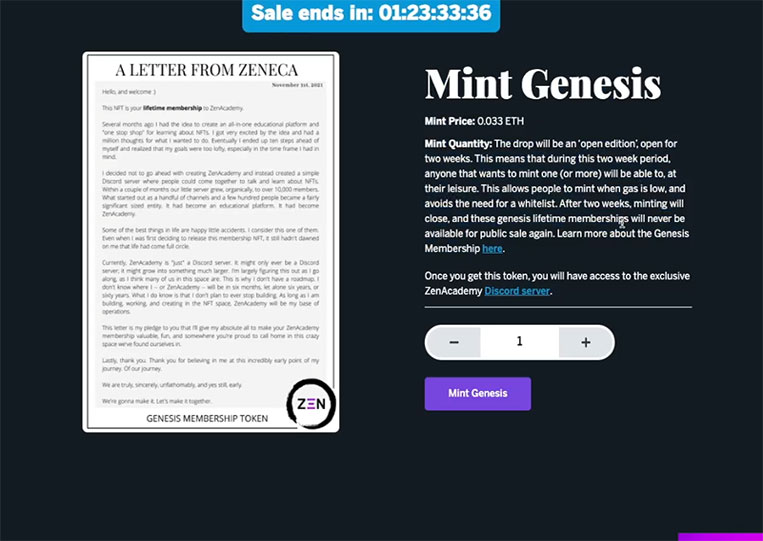
Because this is pretty important, you should always do your research before you buy something. We looked at this and saw they sell a lot of things that I want to buy 15 of these, 20 of these.

You ask yourself, am I buying the same thing, or am I buying something else. In this case, the true answer is you are buying the same thing. You’re not buying a non-fungible token. You’re buying one token like every other token in the same collection, so it’s a bit mistake. Typically, there are two main types of non-fungible tokens that you will purchase during your NFTs journey. One will be called an ERC-721 token, and it is a true non-fungible token. When you buy an ERC-721 token, you are buying a one-of-a-kind. Only one of them exists. Now that there are some technical details, what exactly will you buy when you buy an NFT? We’ll talk about that a bit, but you’re not buying the image. You can buy two unique non-fungible tokens, and both of those tokens can point to the same image, but the tokens themselves are unique. In this case, we are buying ERC-155 tokens.
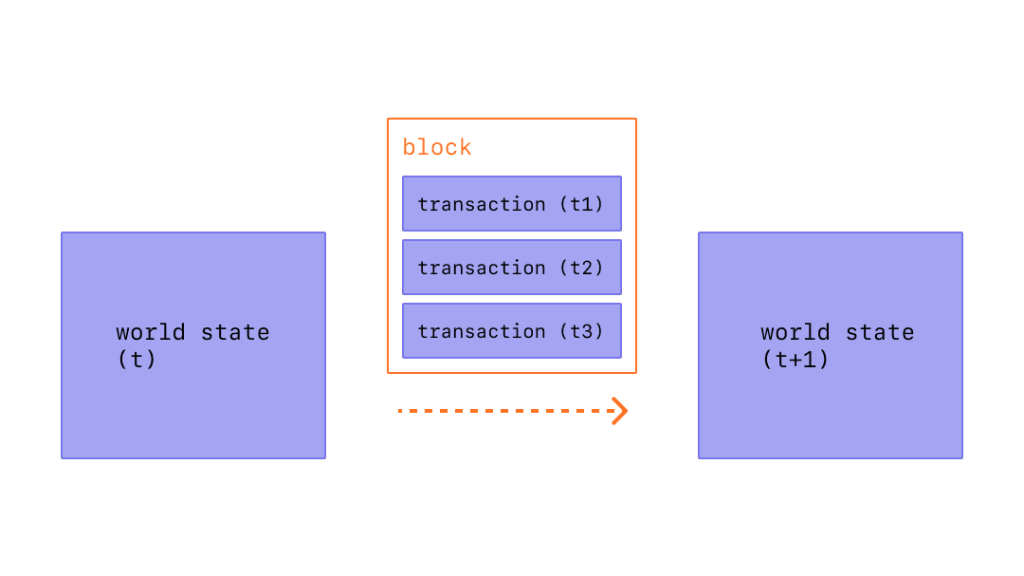
In the very different ERC-1155 token, it is not a token in itself. In ERC-1155 is just a set I mean an arbitrary number of other tokens that can include both ERC-721 non-fungible tokens and ERC-20-fungible tokens.
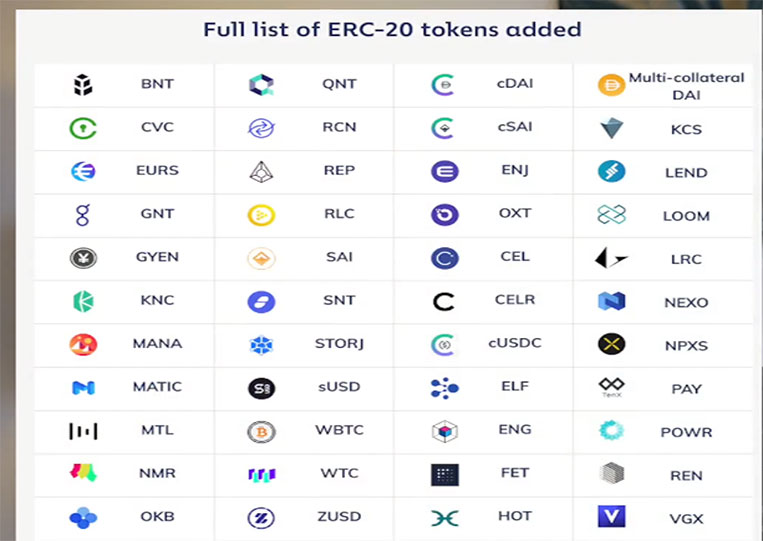
Let’s rewind a bit and talk about ERC-7 and ERC-20. ERC-20 refers to fungible tokens. ERC-20 is an official protocol for proposing improvements to the Ethereum (ETH) network. Now let’s go back to our conversation about what is a fungible token? What is a non-fungible token? We talk about how you have Ethereum tokens and Bitcoin tokens that they are all fungible. An Ethereum is like any other Ethereum. One Bitcoin is like any other Bitcoin, so we believe this is great. We can create a new blockchain for Bitcoin and we can have Bitcoin tokens on that blockchain. We can create a new blockchain for Ethereum and we can have Ethereum tokens on that blockchain. But over time, they realized that people were trying to create a lot of fungible tokens. That’s crazy like we can’t have a blockchain of each token out there. What if we could put new fungible tokens on the Ethereum blockchain? Remember Ethereum is a kind of global decentralized computer. You can put any code on the Ethereum blockchain, including code to create new fungible tokens, and so now we have hundreds of tokens, thousands of tokens exist on the Ethereum blockchain protected by the security of the Ethereum blockchain. But they are fungible tokens just like Ethereum, so it’s a crazy concept. If we go to cointmarketcap.com, pointlickgecko.com.
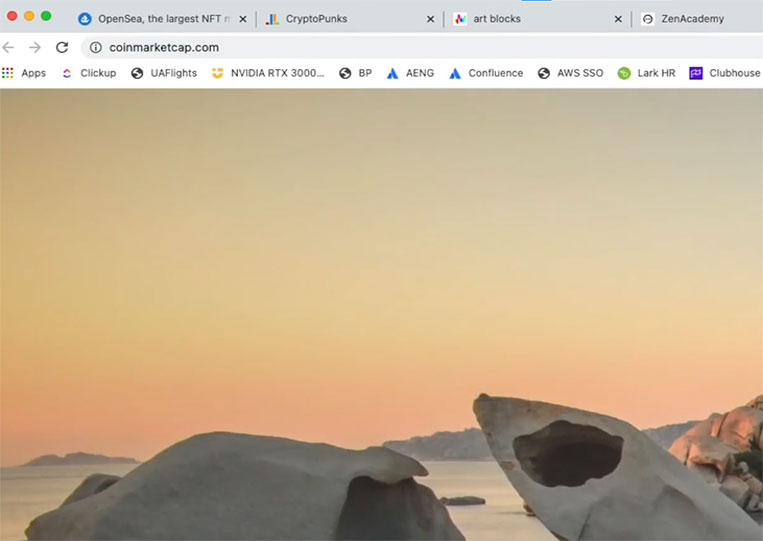
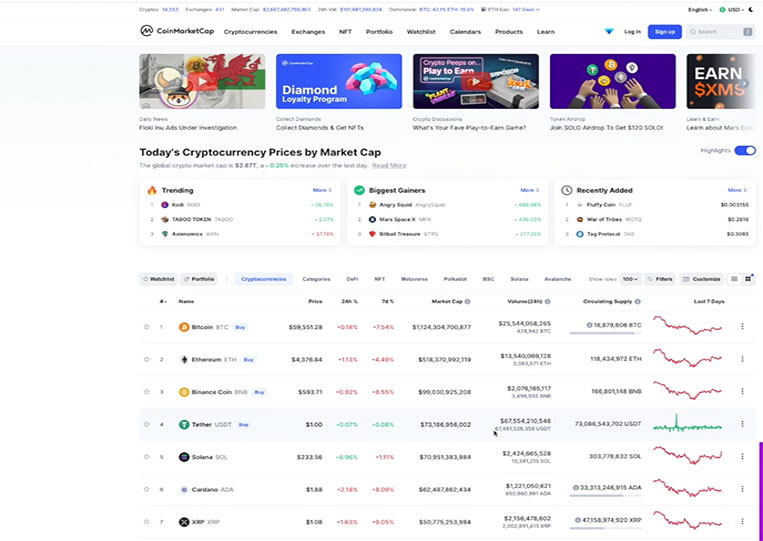
These are the two main sites to look for all the different types of tokens that exist there. You notice that many of the main tokens here are ERC-20 tokens which means it doesn’t exist on its blockchain but on the Ethereum blockchain. For example, USDT Tether called a stablecoin, is one that essentially tries to trap the value of an existing asset in the real world.
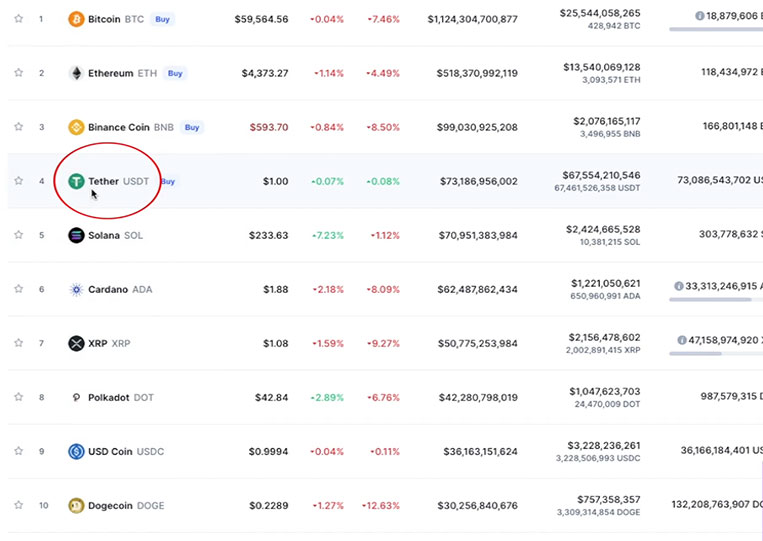
In this case, Tether USDT is trying to map the exact $1 value, and then we have things like USDC Coin that does the same thing, and we have Dogecoin and Shiba Inu coins.
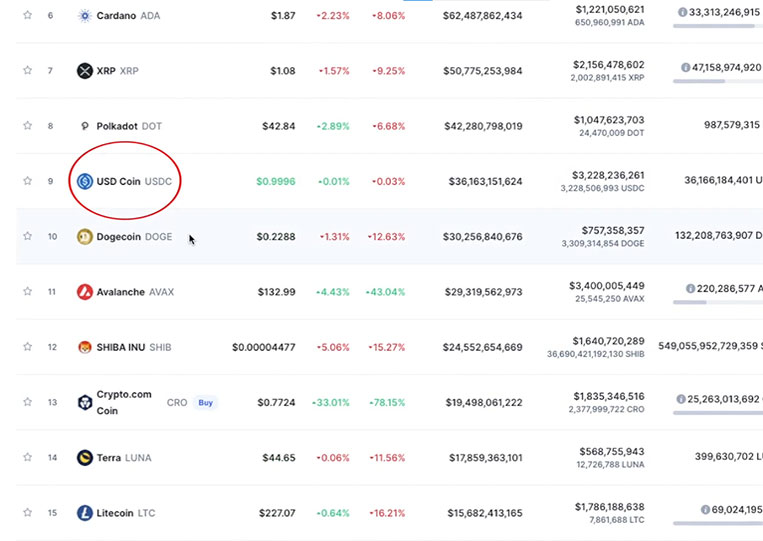
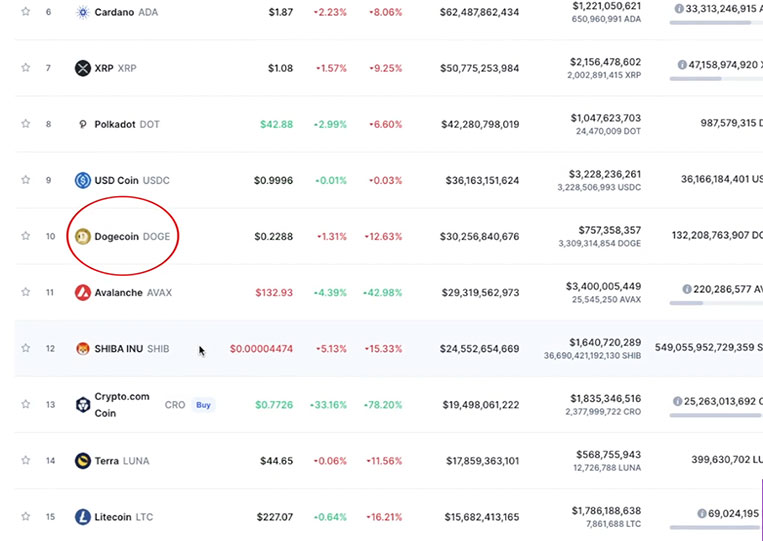
These are meme coins you may have heard of recently. It turns out that there is no blockchain behind the Shiba Inu coin. There is no blockchain behind these as it is an ERC-20 token. Shiba Inu lives on the Ethereum blockchain. It’s just a mini-contract. It’s a piece of code that lives on the Ethereum blockchain allowing it to generate a fungible token.
HOW TO SELL ON A SECOND MARKETPLACE? – PART 2
Let’s go back to all the NFTs we bought. The NFT that we bought is the same as the Shiba Inu coin. Because of the unlimited quantity, it is the open replenishment of these thousands upon thousands of Genesis coins that you know ZenAcademy is trying to mint. They are all identical, and they are essentially fungible. They are not NFTs though people call them NFTs because they are somewhere in the middle of a real currency which is what people think. When you think about ERC-20 tokens or fungible tokens, something like ERC-721 is one of a kind. It’s not a currency. It’s more of a collectible item, and that’s why people think of it as an NFT, even though every individual item in this collection is replaceable. It doesn’t matter which one you get because they are all the same. If you access a site like opensea.io.
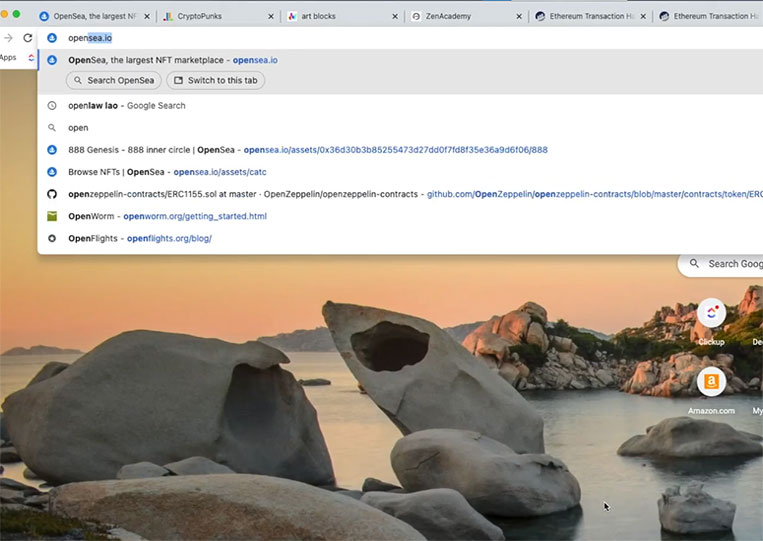
It is a secondary market site. It is an original secondary market site where you can buy and sell NFT for Ethereum-based NFT.
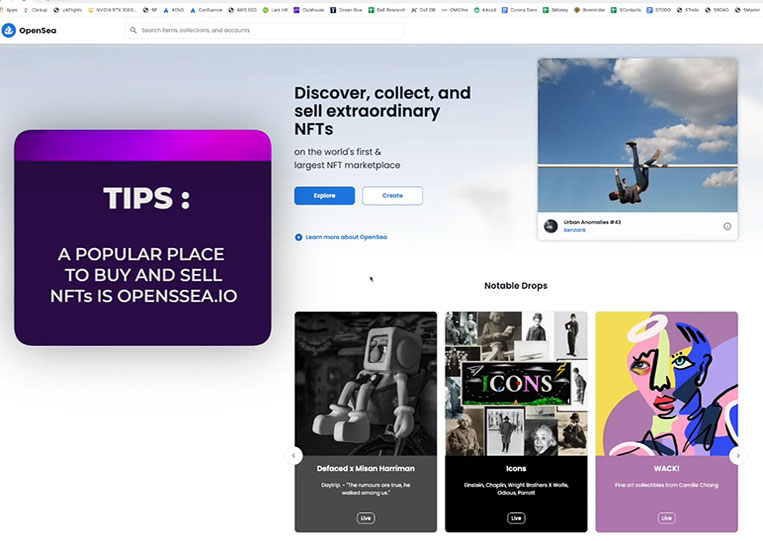
You can go here if we connect this wallet to the MetaMask wallet we are using, and if we click on your profile, you will be able to see all the NFTs you have purchased.
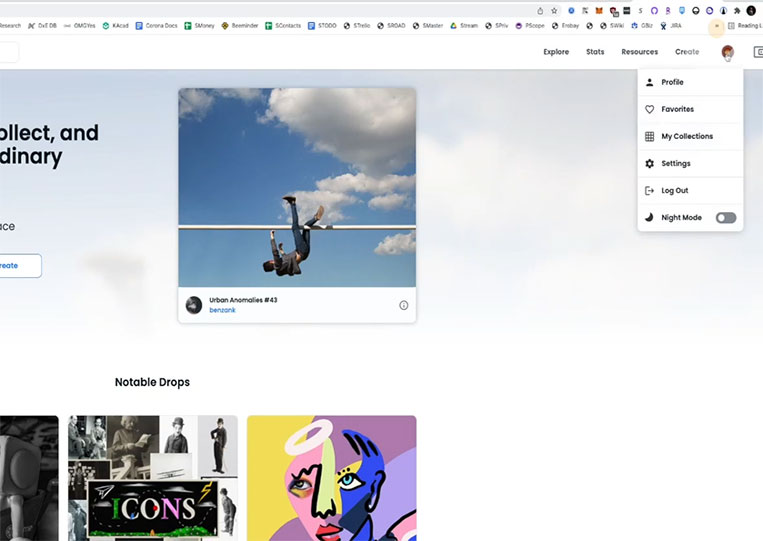
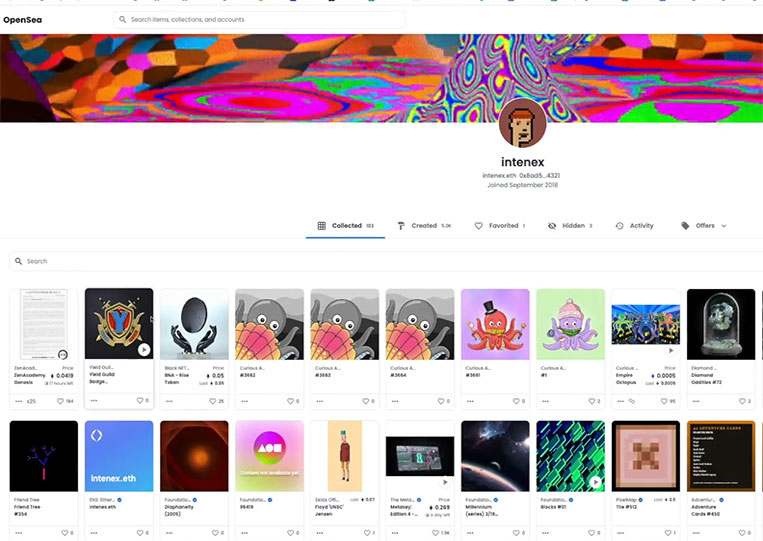
I have a few hundred in this account, you can see these in order when I bought them, and you can see the last one I bought was a ZenAcademy Genesis token. I have about 25 of these, but we just bought one recently. I had 24 before, but now I have 25, and what does that mean?

It shows you own 25 of these, and that’s weird because the tokens are non-fungible there’s only one of them. How can you own so much? They are all the same, and you can see here it shows us there are a total of 4,545 tokens among these Genesis tokens, they are the same, and there are 2,927 individual owners.
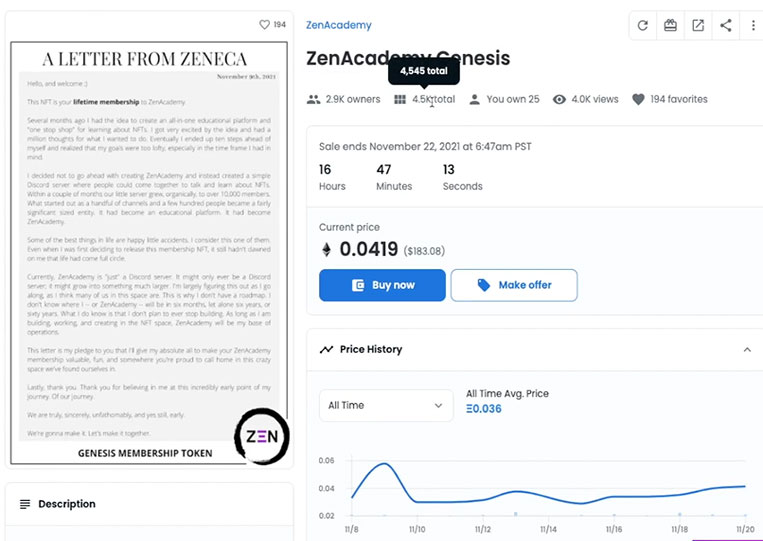
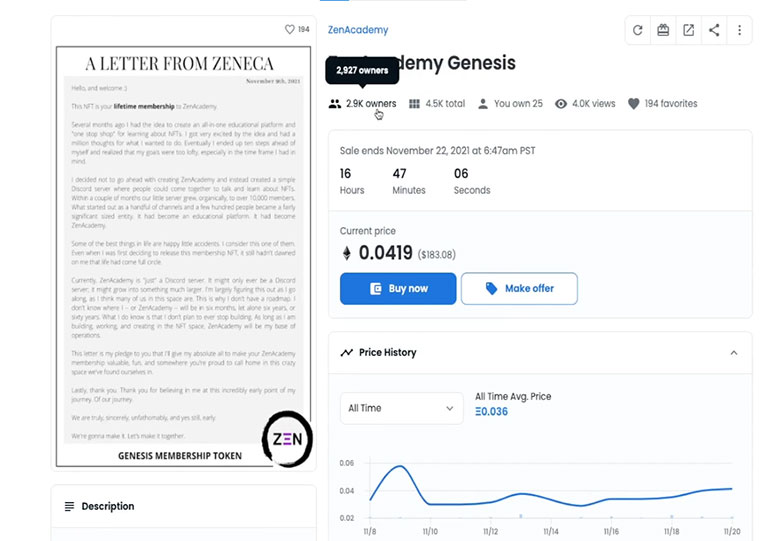
I’m trying to buy one of these. I don’t care which one I get because they are all the same. They give me the same benefit and value, and what does this mean when this is essentially an ERC-20 token. What is the fungible token that exists inside this collection called ERC-1155, and what are ERC-1155 tokens? If we click on the overall collection and look through it, we can see here that there are two types of tokens.
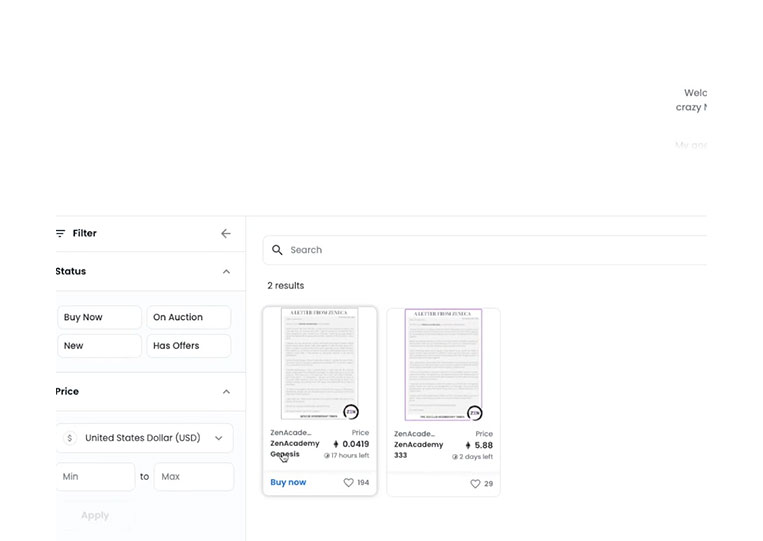
There is a ZenAcademy Genesis we are talking about, currently selling for 0.033 ETH, and then there are 333 ZenAcademy tokens.
Sold for 3.33 ETH, and if we look at each of these. There is a detail here that you can click on, and it shows Token ID is equal to one, and the token sender is ERC-1155.
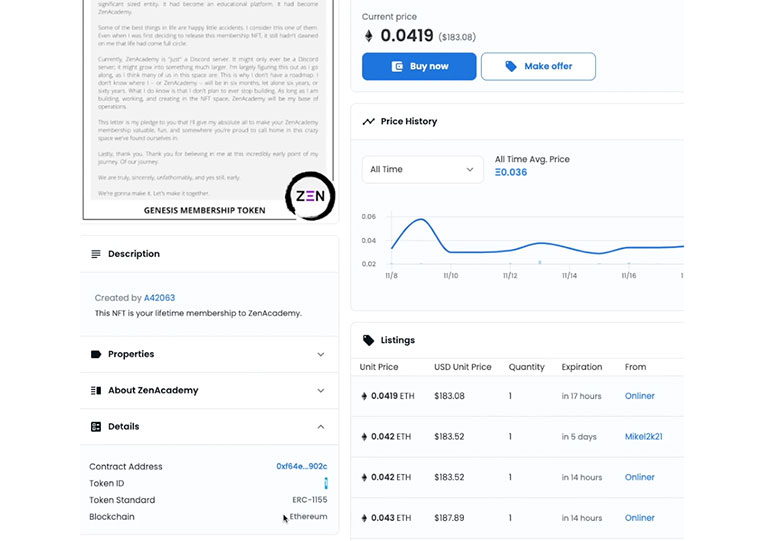

Then we move to the ZenAcademy 333 token.

When we go into the details, it shows the token ID is 333.

That’s interesting and what that means. How can you have both ERC-20 fungible tokens in the same collection as ERC-721 non-fungible tokens? The creator of this contract ZenAca 33 can choose whether I will generate one of the specific token IDs or if I will generate multiple specific token IDs. If ZenAca chooses to generate multiple specific token IDs. In this case, an unlimited number of ZenAca Genesis tokens with a specific ID or a limited number of 333 ZenAcademy, 333 tokens become ERC-20, a token that is fungible because they have multiple same tokens, but you know that there will be one ZenAca 33 token. The ID token 33 is non-fungible because there is only one of them. It is unique and it is a small technical difference between the two main types of tokens that you will see when you buy in this NFT journey of yours. ERC-721 tokens are truly non-fungible, truly one-of-a-kind, and ERC-1155 tokens are not usually meant to be multiple types of uniqueness but are known as NFTs because they are not really what we think of a currency, they are often what we think of when we think of fungible assets.





